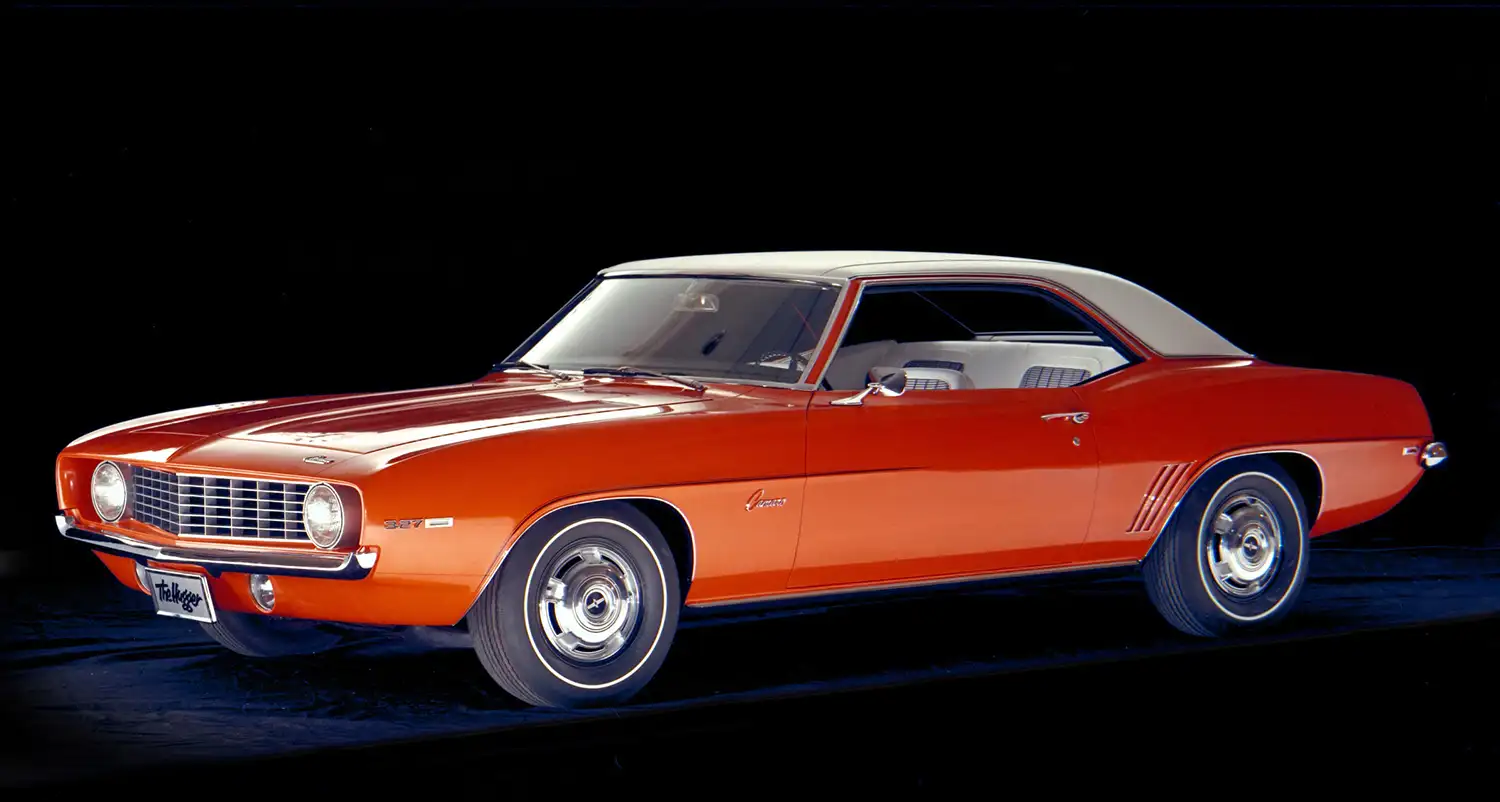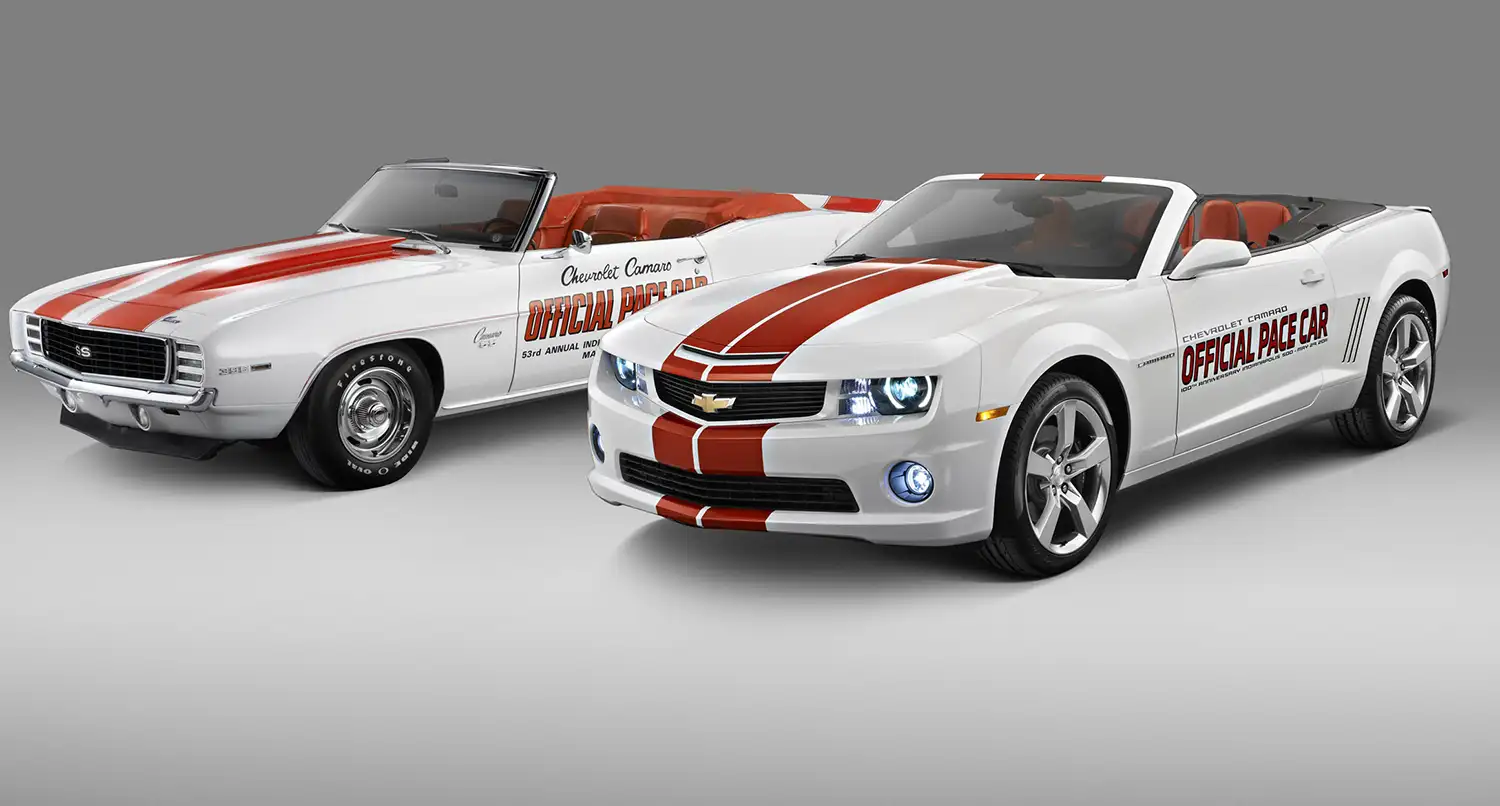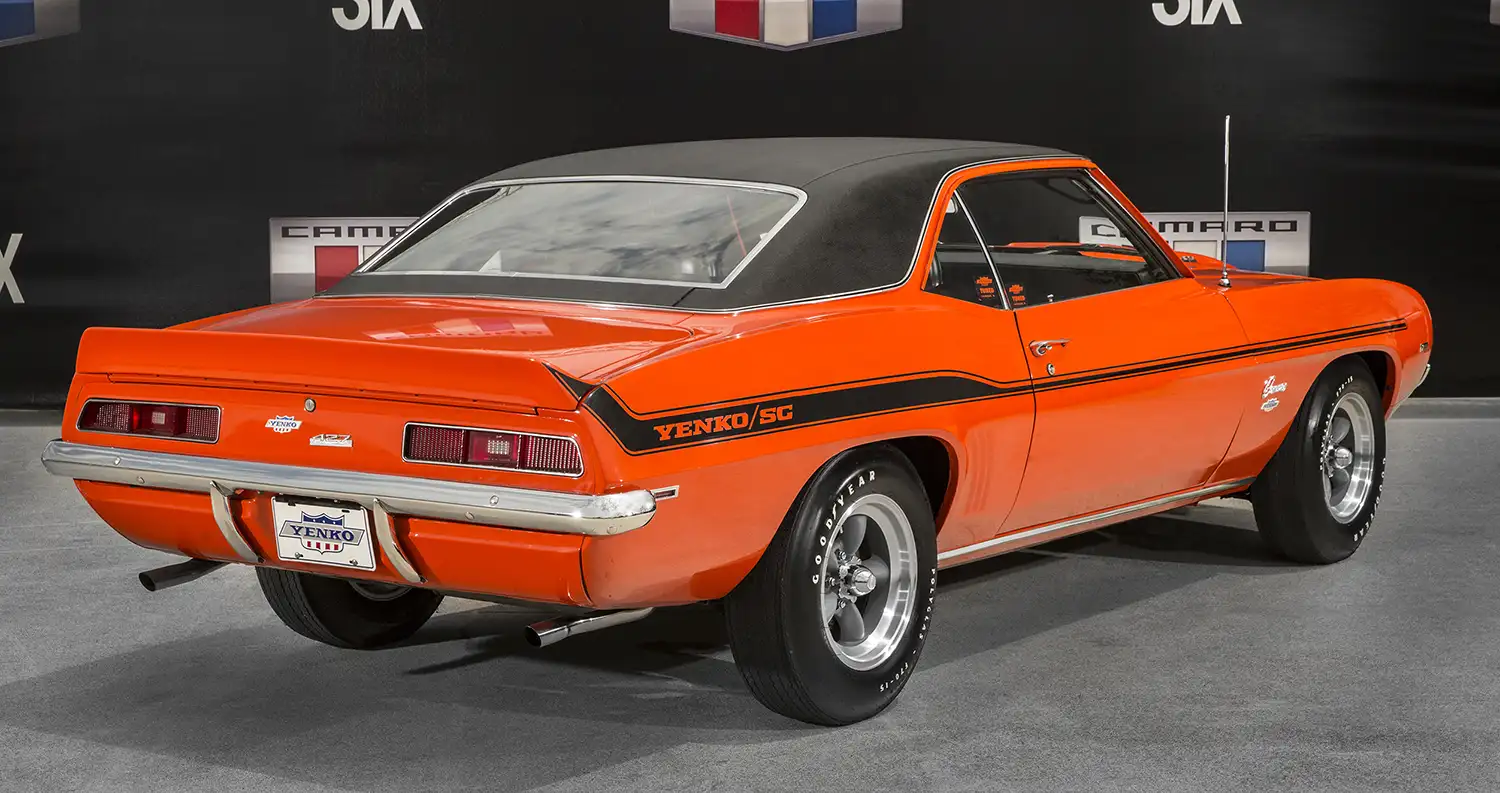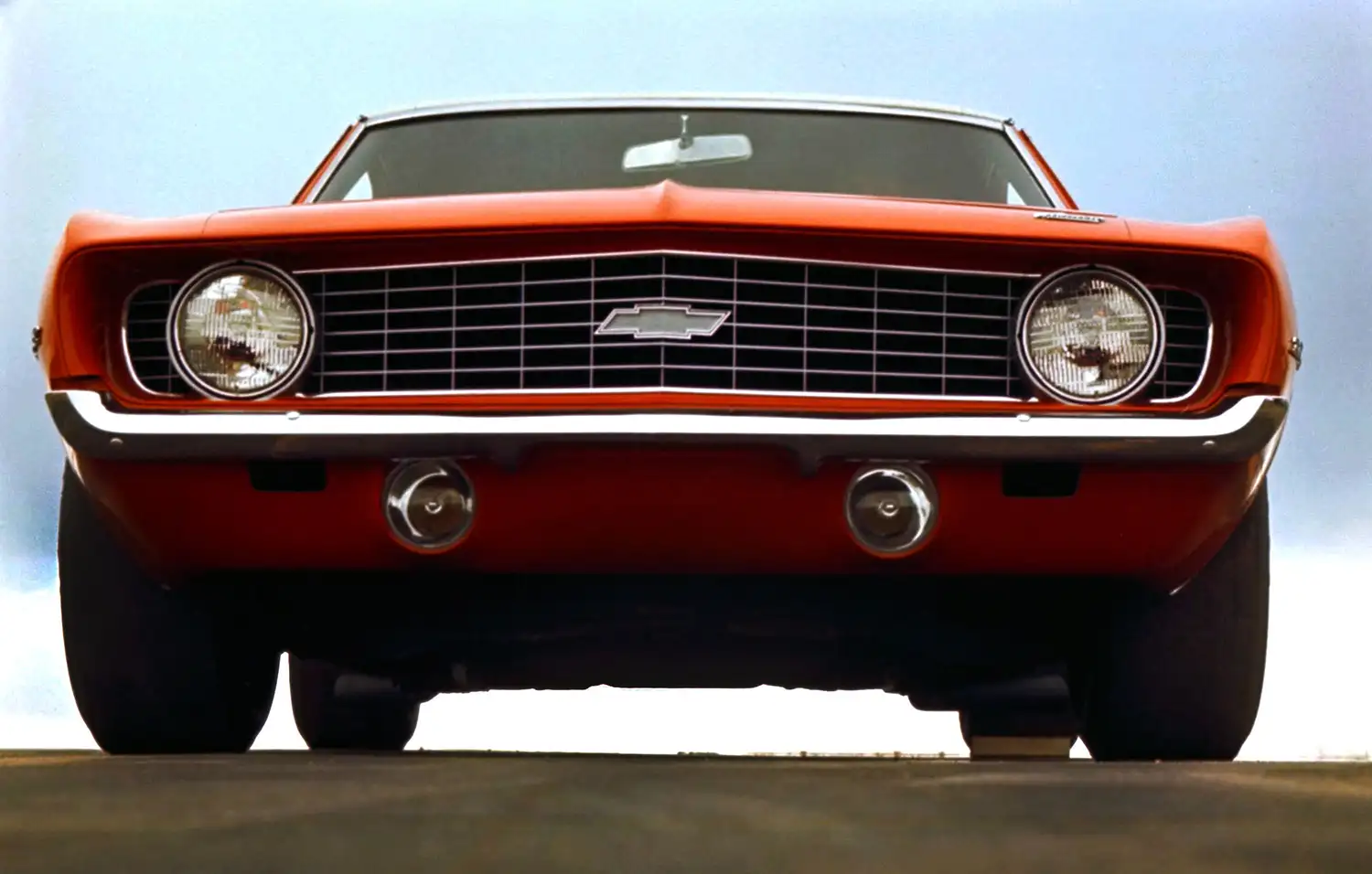
The 1969 Chevrolet Camaro stands as an icon of American automotive history, representing the peak of muscle car performance and style. This model year marked the final iteration of the first-generation Camaro, with significant updates to its design and engineering. Chevrolet offered a range of high-performance variants, each with its unique attributes and legendary status among car enthusiasts. Let’s delve into the details of the 1969 Camaro and its notable variants: the ZL1, Yenko, and COPO.

1969 Chevrolet Camaro: Overview
The 1969 Camaro featured a more aggressive and refined design compared to its predecessors. It boasted a wider, lower stance, a more pronounced grille, and updated rear styling with triple taillights. The interior saw improvements in comfort and functionality, making the Camaro both a stylish and practical choice for muscle car fans.

Base Specs:
- Engine Options: Inline-6 and V8 options ranging from 230 cubic inches (3.8L) to 396 cubic inches (6.5L)
- Transmission: 3-speed manual, 4-speed manual, or 2-speed Powerglide/3-speed Turbo Hydra-Matic automatic
- Horsepower: 140 hp (3.8L inline-6) to 375 hp (6.5L V8)
- 0-60 mph: Approximately 6.0 seconds (with 396 V8)
- Top Speed: Around 130 mph

1969 Chevrolet Camaro ZL1
The ZL1 is arguably the most legendary Camaro variant, developed primarily for drag racing. Only 69 units were produced, making it extremely rare and highly sought after today.
Specs:
- Engine: 427 cubic inch (7.0L) ZL1 V8
- Horsepower: 430 hp (official rating, but actual output was closer to 500 hp)
- Torque: 450 lb-ft
- Transmission: 4-speed manual
- 0-60 mph: 5.3 seconds
- Quarter Mile: 13.16 seconds at 110 mph
- Top Speed: Approximately 140 mph
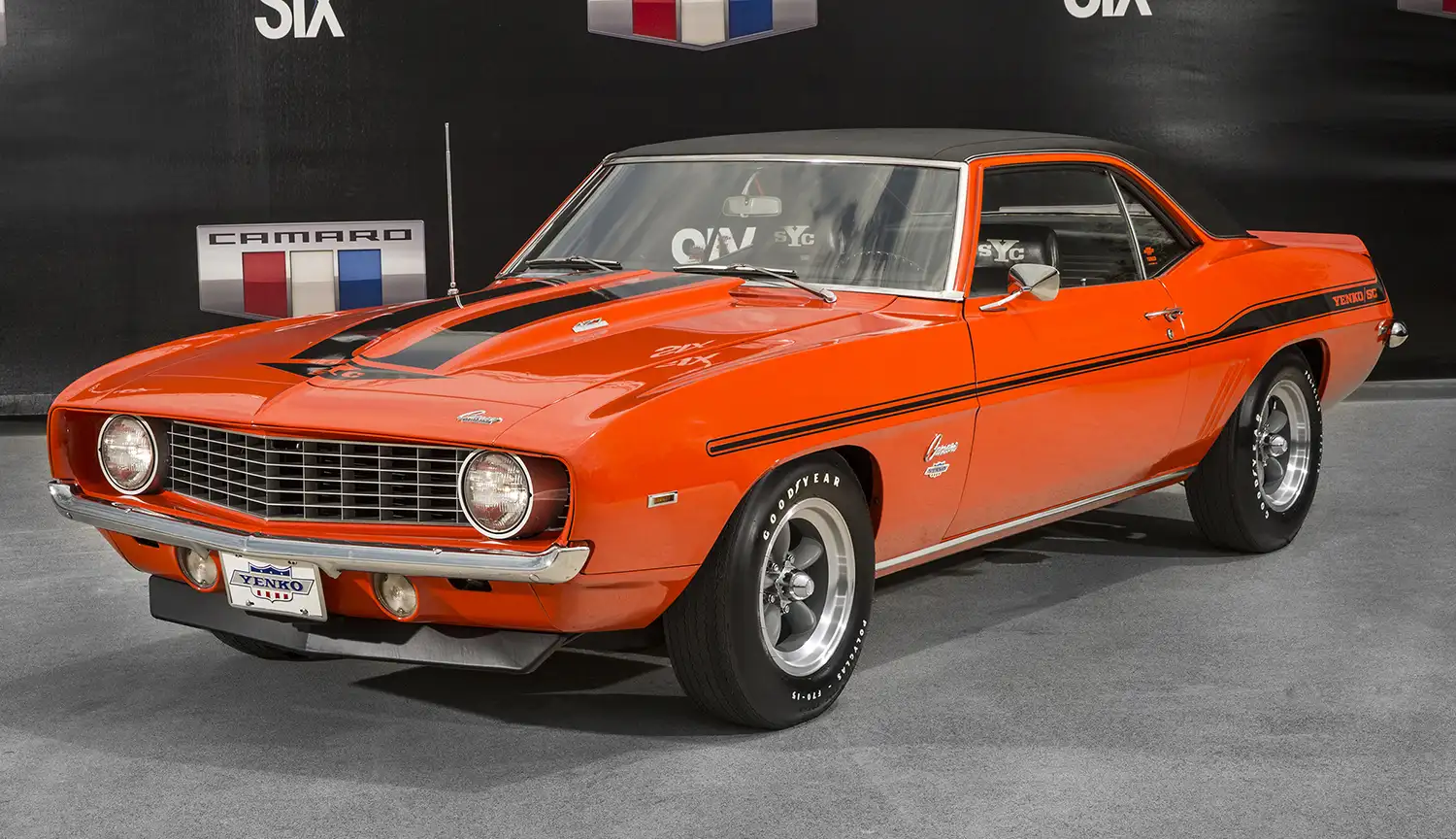
1969 Chevrolet Camaro Yenko
Don Yenko, a famous dealership owner and racer, created the Yenko Camaro by ordering Camaros through Chevrolet’s Central Office Production Order (COPO) system with powerful engines and additional performance upgrades.
Specs:
- Engine: 427 cubic inch (7.0L) L72 V8
- Horsepower: 450 hp
- Torque: 460 lb-ft
- Transmission: 4-speed manual or 3-speed automatic
- 0-60 mph: 5.4 seconds
- Quarter Mile: 13.5 seconds at 108 mph
- Top Speed: Approximately 135 mph

1969 Chevrolet Camaro COPO
The COPO (Central Office Production Order) Camaros were specially ordered high-performance models, primarily intended for drag racing. They featured engines and components not typically available in regular production models.
COPO 9560 (ZL1):
- Engine: 427 cubic inch (7.0L) ZL1 V8
- Horsepower: 430 hp (actual closer to 500 hp)
- Torque: 450 lb-ft
- Transmission: 4-speed manual
- 0-60 mph: 5.3 seconds
- Quarter Mile: 13.16 seconds at 110 mph
- Top Speed: Approximately 140 mph
COPO 9561:
- Engine: 427 cubic inch (7.0L) L72 V8
- Horsepower: 425 hp
- Torque: 460 lb-ft
- Transmission: 4-speed manual or 3-speed automatic
- 0-60 mph: 5.4 seconds
- Quarter Mile: 13.5 seconds at 108 mph
- Top Speed: Approximately 135 mph

1969 Chevrolet Camaro Z/28
Another standout variant of the 1969 Camaro is the Z/28, which was designed for Trans-Am racing. The Z/28 package combined a high-revving small-block V8 engine with handling and braking upgrades, making it a favorite among performance enthusiasts and racers alike.
Specs:
- Engine: 302 cubic inch (4.9L) V8
- Horsepower: 290 hp (official rating, actual output closer to 350 hp)
- Torque: 290 lb-ft
- Transmission: 4-speed manual
- 0-60 mph: 7.4 seconds
- Quarter Mile: 14.8 seconds at 101 mph
- Top Speed: Approximately 130 mph
The Z/28 featured several unique design elements and performance enhancements:
- Exterior: Dual rally stripes, functional cowl-induction hood, 15-inch Rally wheels, and special Z/28 badging.
- Interior: Optional tachometer, center console with auxiliary gauges, and upgraded interior trim.
- Suspension: Heavy-duty suspension components, including stiffer springs, thicker front sway bar, and optional rear sway bar for improved handling.

1969 Chevrolet Camaro RS
The 1969 Chevrolet Camaro RS (Rally Sport) package added a touch of style and sophistication to the muscle car’s aggressive performance. The RS package was available on all Camaro models, including the base, SS, Z/28, and convertible variants. It featured distinctive aesthetic enhancements that made the Camaro even more visually striking.
Specs:
- Engine Options: Same as the base models, with options ranging from the 230 cubic inch (3.8L) inline-6 to the 396 cubic inch (6.5L) V8
- Transmission: 3-speed manual, 4-speed manual, or 2-speed Powerglide/3-speed Turbo Hydra-Matic automatic
- Horsepower: Depending on engine choice, ranging from 140 hp to 375 hp
- 0-60 mph: Varies by engine, approximately 6.0 seconds with the 396 V8
- Top Speed: Varies by engine, around 130 mph with the 396 V8
The RS package focused on enhancing the Camaro’s exterior with several stylish upgrades:
- Exterior:
- Concealed headlights with a vacuum-operated cover
- Revised front grille with RS badging
- Special reverse lights located under the rear bumper
- Bright exterior trim and chrome accents
- RS-specific front and rear valances
- Interior:
- Optional deluxe interior trim with upgraded materials
- Special RS emblems on the dashboard and steering wheel
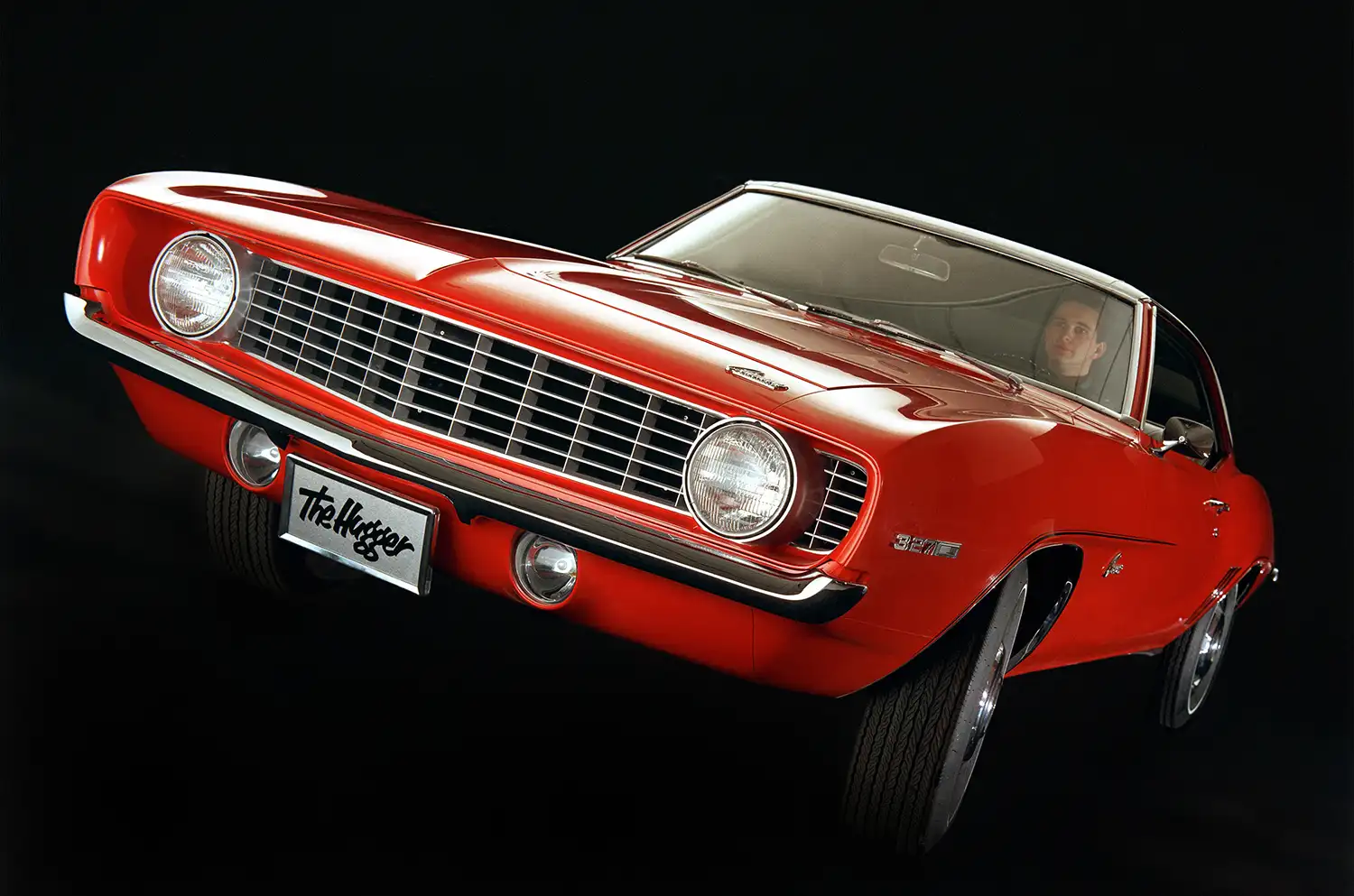
1969 Chevrolet Camaro Hugger
The term “Hugger” was used by Chevrolet as a marketing slogan to emphasize the Camaro’s exceptional handling and road-hugging capabilities. While “Hugger” itself isn’t a specific variant like the ZL1 or Z/28, it became closely associated with the Camaro, particularly in its advertising and promotional materials. The “Hugger” name was often paired with the vibrant “Hugger Orange” paint color, which became iconic for the 1969 Camaro.
Hugger Orange Paint
Features:
- Color Code: 72
- Description: A bold, bright orange that became synonymous with the Camaro’s sporty and aggressive image.
- Availability: Offered across all Camaro models, including the base, SS, RS, Z/28, and various special editions.
The “Hugger” nickname reinforced the Camaro’s reputation for sharp handling and agility. Key design and performance features contributing to its “hugging” the road included:
Exterior:
- Low, wide stance for improved stability and cornering.
- Front and rear spoilers available on performance models like the Z/28 and SS for enhanced aerodynamics.
- Wide range of bold paint colors, with Hugger Orange being one of the most popular choices.
Handling:
- Improved suspension systems, including the heavy-duty suspension on the Z/28 and SS models.
- Optional power steering and upgraded braking systems for better control and stopping power.

1969 Chevrolet Camaro SS
The 1969 Chevrolet Camaro SS (Super Sport) was a high-performance variant that combined powerful engines with sporty styling cues and upgraded suspension components. The SS package made the Camaro a formidable contender on the street and the track, solidifying its status as a muscle car icon.
Specs:
- Engine Options:
- 350 cubic inch (5.7L) V8
- 396 cubic inch (6.5L) V8 (available in two power outputs: L35 and L78)
- Horsepower:
- 350 V8: 300 hp
- 396 V8: 325 hp (L35) and 375 hp (L78)
- Torque:
- 350 V8: 380 lb-ft
- 396 V8: 410 lb-ft (L35) and 415 lb-ft (L78)
- Transmission: 3-speed manual, 4-speed manual, or 3-speed Turbo Hydra-Matic automatic
- 0-60 mph:
- Approximately 6.0 seconds with the 396 V8 (L78)
- Quarter Mile:
- Around 14 seconds at 100+ mph
- Top Speed: Approximately 130 mph
The SS package included several unique design elements and performance upgrades:
Exterior:
- Distinctive SS badging on the grille, fenders, and gas cap
- Blacked-out grille
- Simulated air intakes on the hood
- Special striping along the body
- Optional cowl-induction hood for improved engine breathing
- 15-inch Rally wheels with wide tires for better traction
Interior:
- Optional deluxe interior trim with upgraded materials
- Special SS emblems on the dashboard and steering wheel
- Available auxiliary gauge package for monitoring engine performance
Suspension:
- Heavy-duty suspension components, including stiffer springs and beefier shock absorbers
- Front and rear anti-roll bars for improved handling
- Power front disc brakes as standard for better stopping power
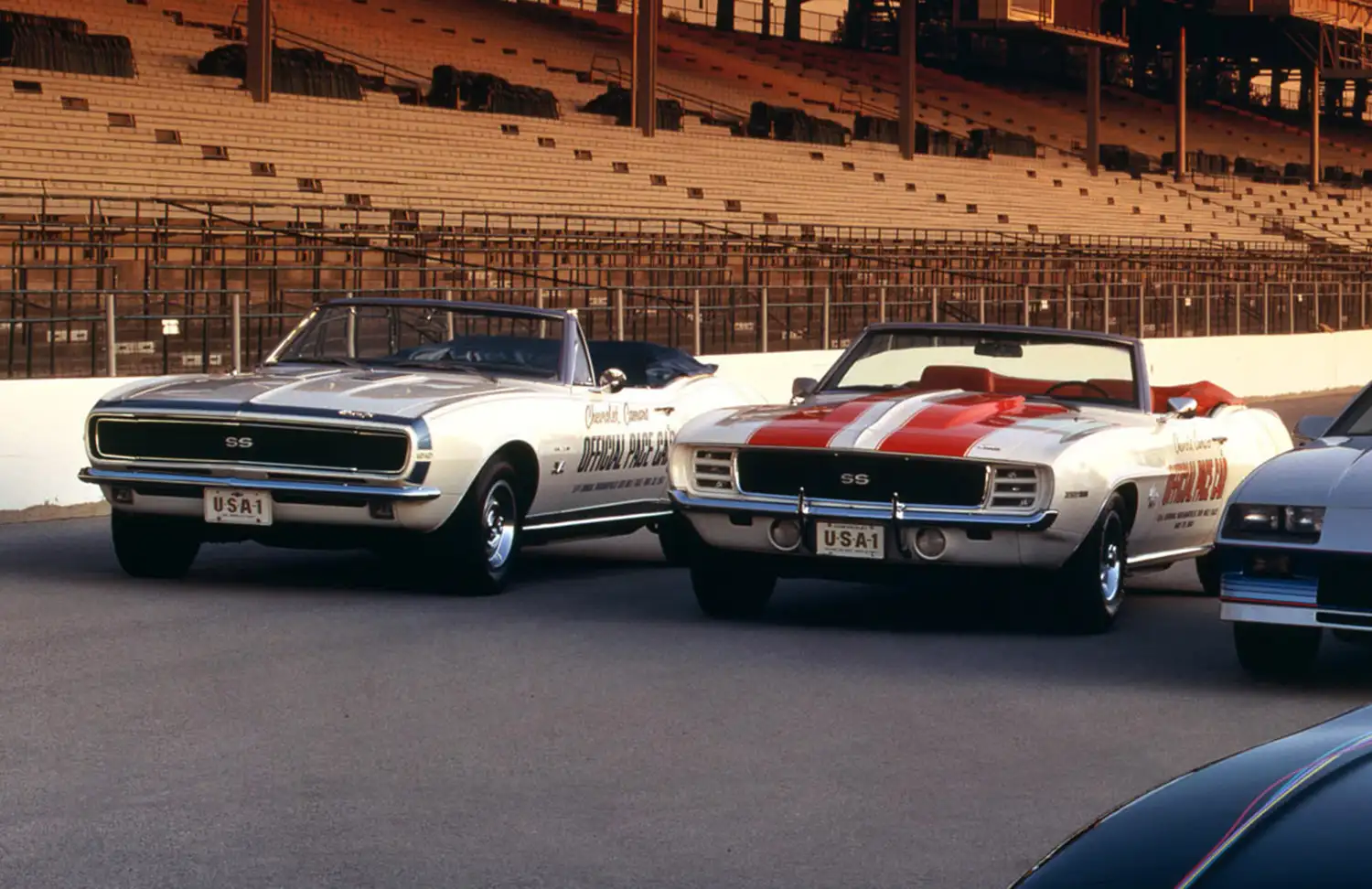
Legacy and Impact
The 1969 Chevrolet Camaro is a celebrated classic, revered for its powerful engines, iconic design, and racing pedigree. The high-performance variants, especially the ZL1, Yenko, and COPO models, have become highly collectible and symbolize the golden era of American muscle cars. These cars not only dominated the streets but also left an indelible mark on drag racing and automotive culture.
Today, the 1969 Camaro continues to inspire car enthusiasts and collectors, embodying the spirit of performance and innovation that defines Chevrolet’s legacy.
Source: Chevrolet
This Article use tools from Chatgpt
